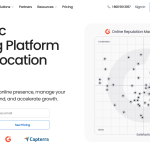The transportation industry stands at a pivotal crossroads. Rising fuel costs, driver shortages, increasing regulatory compliance requirements, and growing customer expectations for real-time visibility have created unprecedented challenges for fleet operators. Yet within these challenges lies opportunity—one that forward-thinking companies are seizing through strategic technology adoption.
The Evolution from Paper to Digital
Not long ago, fleet management relied heavily on paper logs, manual route planning, and phone calls to coordinate operations. Dispatchers worked with physical maps, drivers filled out paper forms, and maintenance schedules lived in filing cabinets. This analog approach, while familiar, created significant blind spots in operations and left substantial room for human error.
Today’s landscape looks dramatically different. Digital solutions that include commercial vehicle software have transformed how fleets operate, offering unprecedented visibility into every aspect of vehicle performance, driver behavior, and operational efficiency. Modern fleet management platforms integrate seamlessly with vehicle telematics, providing real-time data streams that enable proactive decision-making rather than reactive responses.
Key Areas Where Technology Drives Value
Route Optimization and Fuel Efficiency
Advanced algorithms now analyze traffic patterns, weather conditions, vehicle specifications, and delivery requirements to create optimal routes in real-time. These systems can reduce fuel consumption by 10-15% while improving on-time delivery rates. When fuel represents 20-30% of total operating costs, even modest improvements deliver substantial bottom-line impact.
Dynamic routing capabilities allow dispatchers to adjust plans instantly based on changing conditions. If a delivery window shifts or traffic creates delays, the system automatically recalculates routes for the entire fleet, minimizing disruption and maintaining service levels.
Predictive Maintenance
Rather than following rigid maintenance schedules or waiting for breakdowns, modern systems monitor vehicle health continuously. Engine diagnostics, tire pressure sensors, brake wear indicators, and dozens of other data points combine to predict when maintenance will be needed. This approach reduces unexpected downtime by up to 50% while extending vehicle lifespan.
The financial implications are significant. Unplanned downtime can cost $500-$1,000 per day per vehicle, not including towing fees, emergency repairs, and customer service impacts. Predictive maintenance transforms these unexpected expenses into planned investments.
Driver Safety and Performance
Comprehensive driver monitoring goes far beyond simple GPS tracking. Modern solutions analyze acceleration patterns, braking behavior, cornering forces, and speed compliance to create detailed driver scorecards. This data enables targeted coaching programs that improve safety outcomes while reducing insurance premiums.
Some platforms incorporate forward-facing cameras with artificial intelligence to detect potential collisions, lane departures, and distracted driving behaviors. These systems provide immediate feedback to drivers while documenting incidents for fleet managers.
Regulatory Compliance
Electronic logging devices (ELDs) represent just the beginning of digital compliance tools. Comprehensive platforms now manage driver qualification files, vehicle inspection records, maintenance documentation, and hours-of-service tracking in integrated dashboards. Automated alerts ensure renewals happen on schedule and violations are addressed immediately.
During DOT audits, having digital records organized and easily accessible can mean the difference between minor administrative issues and significant penalties or operating restrictions.
Implementation Strategies for Success
Successful technology adoption requires more than simply purchasing software. Organizations must approach implementation strategically, considering their unique operational requirements and organizational culture.
Start with Clear Objectives
Define specific, measurable goals before evaluating solutions. Whether reducing fuel costs by 12%, improving on-time delivery rates to 98%, or decreasing accident rates by 25%, clear objectives guide vendor selection and implementation priorities.
Prioritize User Experience
The most sophisticated system fails if drivers and dispatchers won’t use it effectively. Modern platforms emphasize intuitive interfaces, mobile accessibility, and minimal training requirements. Look for solutions that integrate naturally into existing workflows rather than requiring complete operational overhauls.
Ensure Integration Capabilities
Today’s fleets often use multiple specialized systems—accounting software, fuel card programs, maintenance management tools, and customer relationship platforms. Choose solutions that integrate seamlessly with existing infrastructure through APIs and data sharing capabilities.
Plan for Change Management
Technology adoption affects every level of the organization. Develop comprehensive training programs, establish clear communication channels, and designate internal champions who can support their colleagues through the transition period.
Measuring Return on Investment
Quantifying technology benefits requires tracking key performance indicators consistently. Fuel efficiency improvements, maintenance cost reductions, insurance premium decreases, and productivity gains all contribute to overall ROI. Most organizations see positive returns within 12-18 months of implementation.
However, benefits extend beyond immediate cost savings. Enhanced customer service capabilities, improved regulatory compliance, and better risk management create long-term competitive advantages that may prove even more valuable than short-term savings.
Looking Forward
The pace of innovation in fleet technology continues accelerating. Artificial intelligence, machine learning, and IoT sensors will create even more sophisticated capabilities in coming years. Organizations that establish strong digital foundations today position themselves to leverage these emerging technologies effectively.
Success in tomorrow’s transportation landscape belongs to companies that embrace technology strategically, focusing on solutions that deliver measurable value while enhancing operational capabilities. The question isn’t whether to adopt digital fleet management tools, but how quickly organizations can implement them effectively.
Lynn Martelli is an editor at Readability. She received her MFA in Creative Writing from Antioch University and has worked as an editor for over 10 years. Lynn has edited a wide variety of books, including fiction, non-fiction, memoirs, and more. In her free time, Lynn enjoys reading, writing, and spending time with her family and friends.















